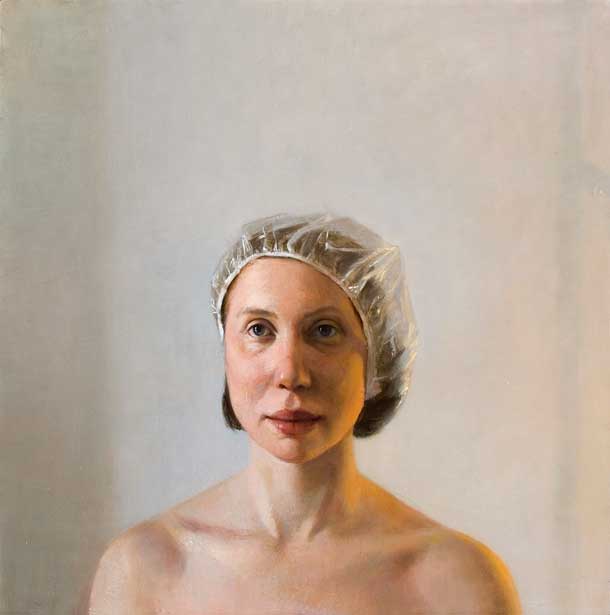
Emil Robinson Showered 2007 oil on panel 24″x24″
click here for a larger view
I was recently introduced to the work of Emil Robinson, a Cincinnati, Ohio based painter who has an upcoming solo show this September at the Waterhouse and Dodd Contemporary in London England (September 28 through October 21). In 2009 his painting was a finalist in the “Outwin Boochever Portrait Competition”, Smithsonian Institution in Washington D.C. He also had a solo show in 2009, “Axis Mundi”, at the Taft Museum Of Art in Cincinnati. He also has shown at the Gallery Henoch in New York as well as the Manifest Gallery in Cincinnati and the Heike Pickett gallery in Kentucky.
On the main page of his website he includes a statement that I found particularly thoughtful:
“… I believe in the power of painting to communicate something mysterious. As a representational painter there are nameable things in my paintings. However, I am invested in the unnameable as my primary subject. I think a carefully made painting is a perfect answer to the information inundation in contemporary society.”
I interviewed Emil Robinson by email to find out more about this intriguing emerging painter…
Larry Groff: Tell us something about how you made this 2009 portrait (that was in the National Portrait Gallery’s “Outwin Boochever Portrait Competition 2009) of your wife (then fiancée -) Showered Tell us something of your process. Why did you say in your statement about this painting from a review in the Washington Post [http://www.washingtonpost.com/gog/exhibits/outwin-boochever-portrait-competition-2009,1158124/critic-review.html] “This painting went through long and hard growing pains,” Robinson writes in a statement accompanying the work. “Sometimes a long engagement produces an intimacy with a work from all of the touching and growing.”
Emil Robinson: I made this painting under a very specific and personal set of restraints. My wife Catherine and I had been dating for a couple years at this point, and I was feeling the pressure of knowing that we were meant to be together while at the same time not feeling mature enough to get married. Since I grew up in a very conservative Catholic family, this emotional mixture was troubling. Catherine was living in New York working as an architecture intern. We were not able to talk that often due to her long hours and my mixed feelings, it was hard. I did not have a studio at the time and so I was working on the painting in my bedroom. This was a bad idea, as I woke up every morning and had to instantly engage the painting. I was working from a photograph that Catherine and I had made one afternoon while we were cleaning her apt. At this time, I worked almost exclusively from photographs. The painting took months to complete, and as I worked on it the photo faded away, and a strange mixture of reverence, anxiety, and meditation took its place. Since Catherine was not around as a visual reminder of my inadequacy, the painting morphed and adapted its own language. This all sounds romantic, but it was hard work and I was very unsure of where the work was going for most of the time. My physical process at the time was a cyclical rhythm of creation and destruction. I painted quite directly with a loaded brush and then used razor blades, rags and putty knives to drag through large areas of the painting to unify the image in light and space. Eventually the painting built up a base of nuance that allowed me to paint directly for the finishing touches. I think the painting became a document depicting a hard physical fight for something that is ultimately quiet and intense.
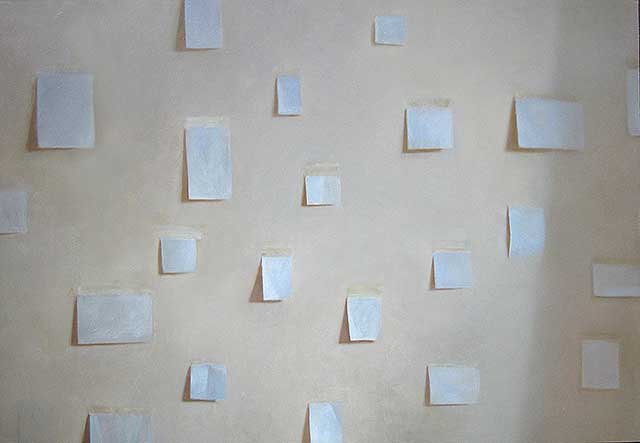
Paper On The Wall 2008 oil on panel
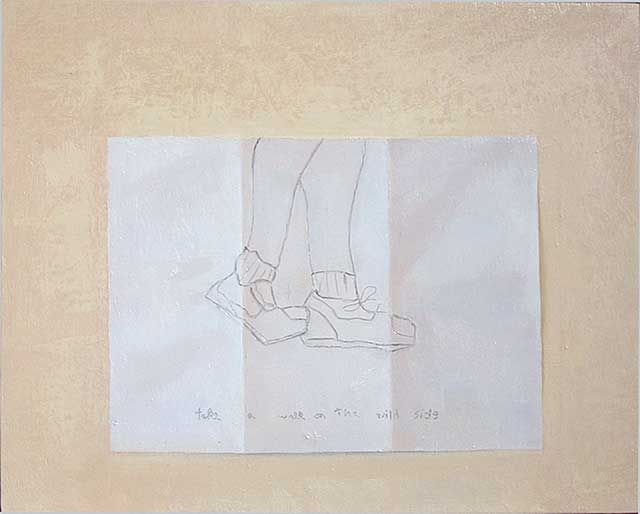
Catherine’s Drawing 2008 oil on panel 10″x12″
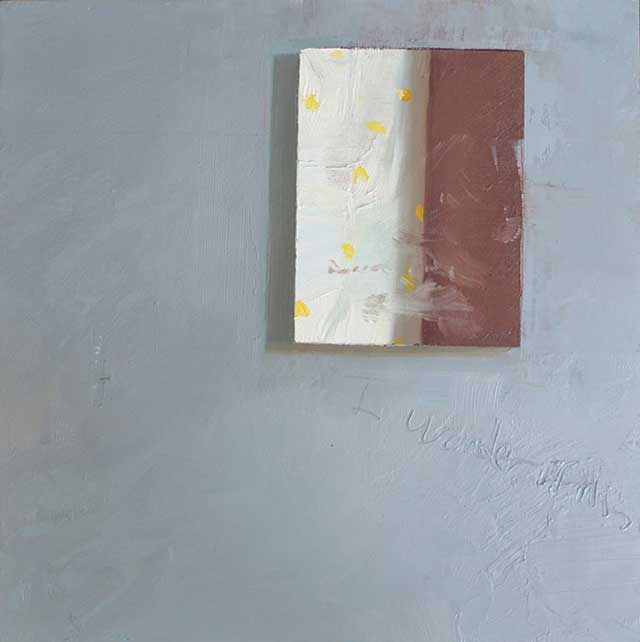
“clerestory” 2011 oil on panel 14″ x 14″
LG: I like what you said in another interview “…Painting is the act of constructing an abstraction. The most intelligent and powerful realist work exists as a formal masterpiece.” A number of your paintings strongly emphasis such formal elements as the subjects relation to the picture plane and balancing the flatness of the picture with the solidity of form and space. In the paintings with a very shallow space, like with the paintings of papers on the wall, it starts speak to trompe l’oeil paintings, like the letter-rack paintings of such painters as John Peto. Can you tell us more about your thinking with these paintings and your thoughts on abstraction with realist painting?
ER: All painting is always an invention. Artists make decisions that build on one another until the reach something new. In the beginning, I always have ideas about how something will go. The only way the painting is ever successful is if it becomes something foreign to me. At the same time, it seems to gradually become right. I have to be careful to not rely on rendering the surface of things in my paintings instead of seeing larger movements, organizations or potential formal SURPRISES. Rendering is so pleasurable to me, that for a long time I would carefully create a composition I liked, and then render the light on each surface or object. I used the camera as a sketchbook and took images of the minimal interiors that attracted me. I would spend time in Photoshop cropping and adjusting. Then I would spend a long time painting the image much in the way I described when talking about the painting “Showered.” In 2008, I received an Elizabeth Greenshield’s Grant and Catherine and I moved to London for six months while she worked at another architecture firm, this time designing exhibitions for museums including the Victoria and Albert Museum. The exchange rate between pounds and dollars was terrible and we found that we could barely scrape by. I was without a studio again, and while Catherine was at work, I completed small intimate paintings of objects lying around the apartment. I painted pieces of paper, underwear, and other small bits of space from observation. I was interested in pushing painting to perform under restrictions of content and intention. The paintings were gently tongue in cheek, but I was learning a lot about my tastes and painterly temperament. While growing up, my family exposed me to a lot of modernist and minimalist work. I found that I could approach some of the spirituality I felt from Modern work by way of representational painting.
I was aware of the affinities that my work had with trompe loil paintings, but I had very different interests. “Fooling the eye” is uninteresting to me most of the time. I am more intrigued by the transformative capabilities of painting. It is true that shallow space and objects casting clear shadows onto flat planes creates illusion quickly, but I want much more than that. Light, air, mood, space, temperature, etc. all become fuel for a new way to experience something. I believe many of my minimal works have a strong meditative power.
I think Peto is a wonderful painter, but less because of his stature as a trompe l’oeil artist and more because of the unique vision he had.
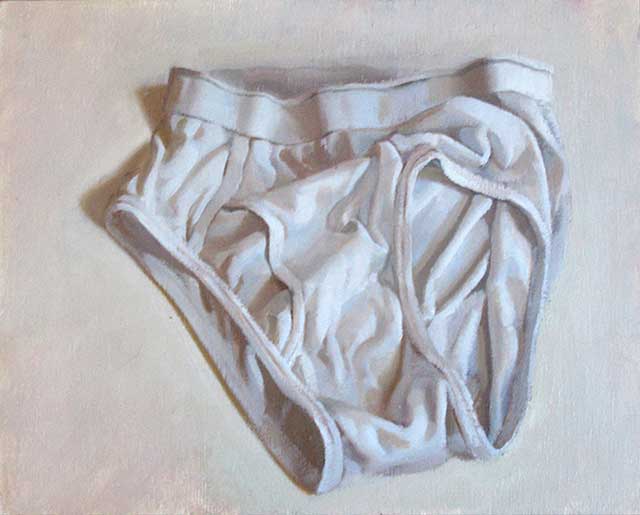
Underwear 2008 oil on panel 10″x12″
LG: How important is the process of working from observation to you?
ER: It has become necessary. Photographs tie me too clearly to an image. Photographs actually make painting much harder for me because they dictate only one possible solution. Now that I work from life more, I see each painting as an invitation for growth and a new relationship. I am also painting quite quickly recently with large paintings taking only a couple weeks instead of a few months to complete. I am willing to settle for something less polished if it gets at the heart of what I am experiencing. I also like the challenge of seeing things differently every time I look at them. Now many of my smaller paintings are one-shot paintings done in 3-6 hours.
LG: In setting up and painting a still-life or view of an interior there is always a risk of something being too much or not enough in a painting – what process do you usually go through to get the right amount?
ER: It changes every time. I used to use the camera to decide that, and then stick to the image I had chosen. Now I add, remove, and move things as the work evolves. Many times a particular object will excite me and I will paint the object within the picture intuitively allowing my eye to crop. It may be that the one object is enough or I may realize that I need more information. I am not looking for particularly empty or full paintings; I am more interested in paintings that work well. Many times, I find that less is more for me. Often I feel the balance of the painting and it will just start to shine when the right balance happens. I focus on each space of a painting having a unique but helpful voice.
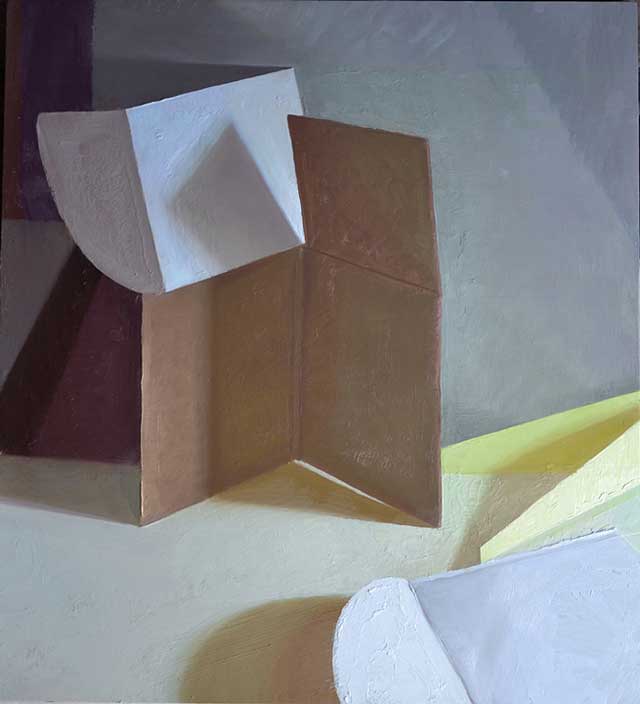

Under The Tree 2011 oil on panel 42″ x 34″
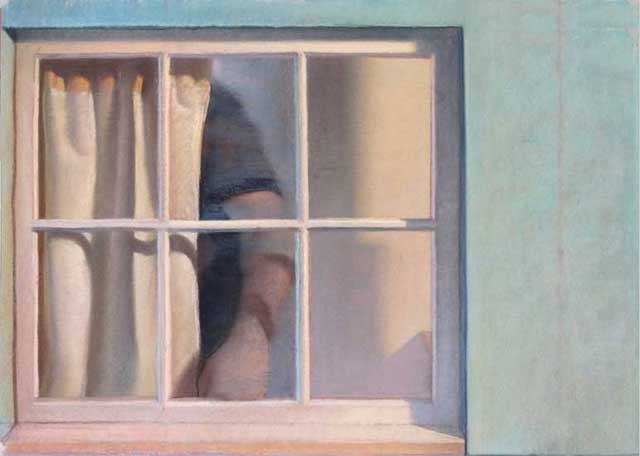
Untitled 11 Mixed media on paper 21 x 29 inches
LG: What tends to give you the greatest difficulty with your work, the greatest satisfaction?
ER: Any number of things might be dissatisfying in the work from color to value to drawing to sentiment to physical ineptitude and basic lack of skill. I am always hungry to see my work more clearly! It is frustrating to feel like I am completely blind to what my painting needs.
On the other hand, painting is constantly giving me new reasons to rejoice. The simple interaction of two colors is enough, or the smell of my studio. Another constant source of satisfaction is drawing the figure.
LG: There seems to be a strong figurative art scene emerging from Cincinnati and other areas of the Mid-west. It used to be that New York was the only serious place to establish yourself as a painter. What had been your experience been with living in Cincinnati in terms of growing professionally as a painter?
ER: I think of my professional growth and my artistic growth as being separate but necessarily linked. While in graduate school at the University of Cincinnati, I allied myself with and nurtured a core group of serious painters including Dan O’Connor, Rob Anderson, Tim Parsley, and Aidan Schapera. We all continue to give each other serious feedback, support, and competition. Many of us were featured in a show earlier this year at the Weston Art Gallery in Cincinnati. Daniel Brown, editor in chief and founder of Aeqai online arts journal,http://aeqai.com/main/ curated and organized the show. All of us draw the figure together at the Manifest Gallery started by my colleague and former professor Jason Franz.
My wife Catherine has been a huge influence on my work, work ethic, and professional career. Catherine has a brilliant creative mind, and she sets a wonderful example for me.
The success I have had with galleries is mostly a result of pounding the pavement. I brought a folder of images around to galleries in New York, and London when I lived there. I have showed with Gallery Henoch in New York and Waterhouse and Dodd is the gallery I work with In London. I will have a solo show there next month. Another connection that has been very fruitful is with the Heike Pickett gallery in Versailles and Lexington Kentucky. My friend Kevin Muente, another good painter, introduced me to the gallery.
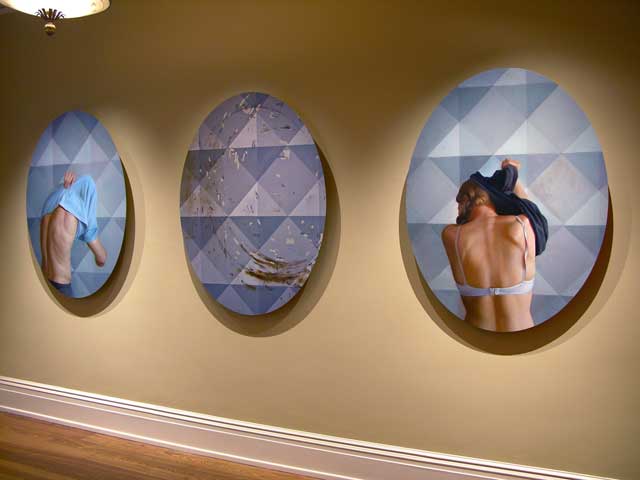
Convergence 2009 oil on di-bond and digital print on di-bond each oval: 48″x36″
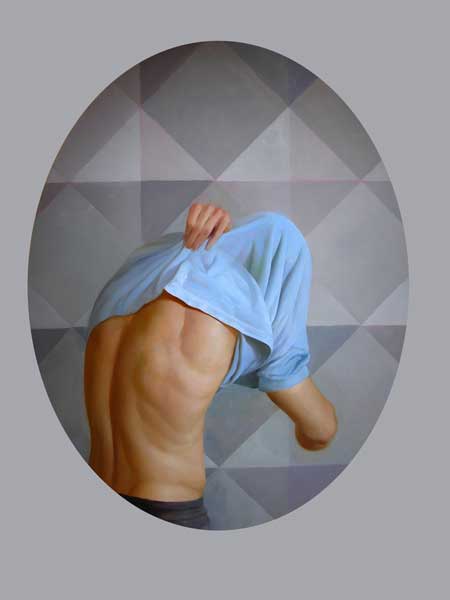
Left Panel of Convergence 2009 oil on di-bond 48″x36″
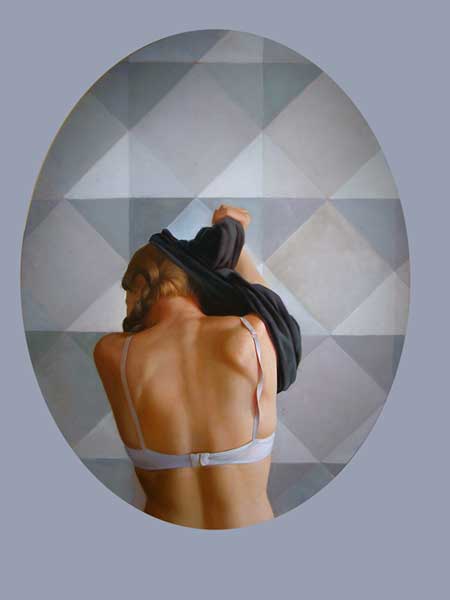
Right Panel Covergence 2009 oil on di-bond 48″x36″
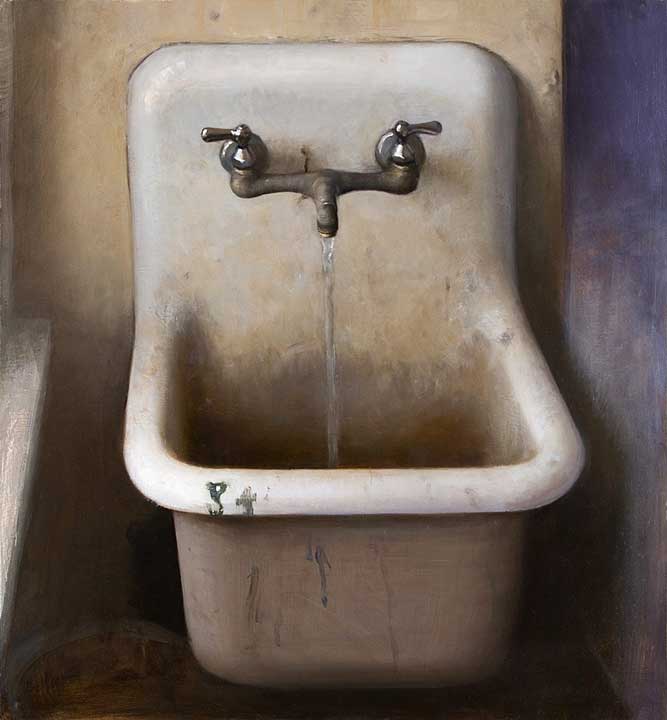
Estuary 2007 oil on paneln 30″x28″

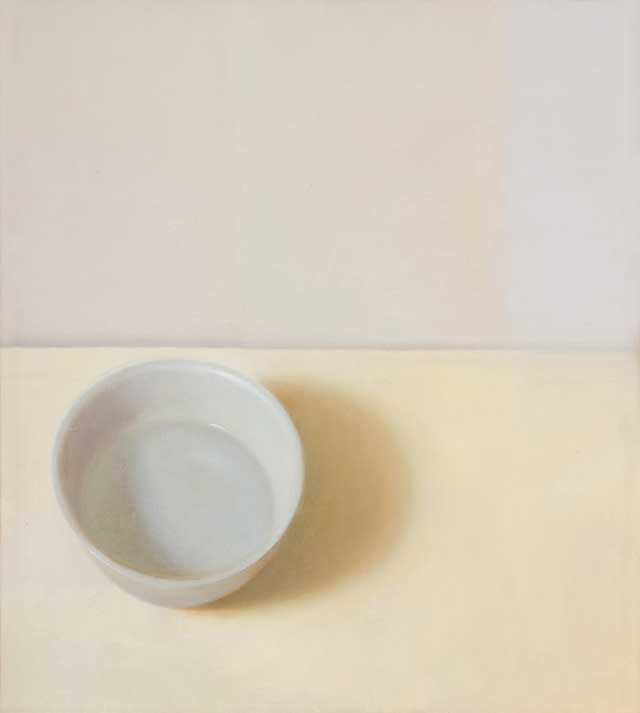
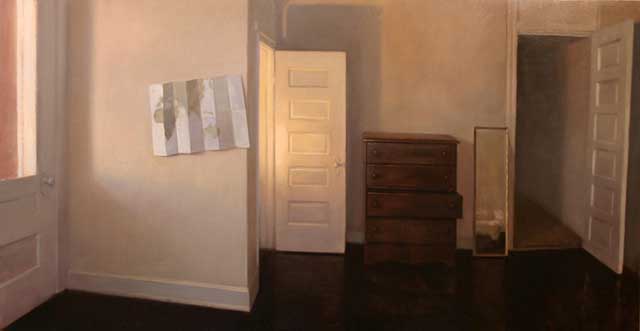




Thanks for presenting great information about his image process. It would be nice to include information about the supports: what material is the panel, size and ground, or if they are commercially prepared.
One of the things I love most about the artists presented in this blog is that they all seem, in one way or another, to have moved beyond the self-conscious intentions of modernism while maintaining vital connections to that previous movement. I think we could consider a lot of the artists interviewed in Larry’s wonderful blog “metarealists”? I copied and pasted below. Let me know if I am totally off base here. Thanks. -Noel
From Wikipedia about Metarealism:
WHAT IS METAREALISM?
Metarealism is synonymous to metaconscience, which means beyond psychological consciousness, beyond a subjective psychological polarized view of reality. Metarealism seeks to depict the reality which exist beyond that psychological subjective perspective. Metarealism proposes not only to communicate further than the pictorial aspect of the perception of other dimension of reality, but also the essence of those dimensions and their relation to us as human beings. Metarealism then becomes a tool for the evolution of consciousness; just like in the old days artists painted sacred art to depict their vision of the reality they perceived, through their spiritual interpretation of other dimensions. Metarealism could be considered a sacred art, in that it also tries to depict, through a [metaconscious] perspective, the essence of reality as perceived by a metaconscious mind. Meta meaning, a holistic view of reality as perceived by a metaconscious mind, who sees reality as a whole rather than from a subjective personalized intellectually fragmented point of view. Metarealism is the materialization in pictorial form of the reality of other dimensions and their direct effect, and relation upon us. Metarealism tries to depict the relations between those dimensions of reality and how we psychologically interpret them through our sub mental symbolism.
METAREALISM IN VISUAL ART
According to Bernard De Montréal[1], metarealism in visual arts is an involutionary art that expresses the dissimulated frustrations and struggle of the unconscious self in his search for real identity through the euphoric, sub mental symbolism of the art form an avocation of the soul that has little in common with the interdimensional identity of the self.
Conscious or mental art is inspired from the higher self, and is a channel for the dictation of the conscious science of art, instead of being simply a lower form of self-expression, a cultural artifact of relative value.
The mental artist has little need for unconscious expression and directs his creative “expiration” toward the exploration of higher consciousness through his art, rather than simply entertaining a fictitious role, in part to quell the domineering impulses of the soul, and in part for the recognition of his peers. Art in its astral form belongs to our kind of civilization. We still need its contention that there is more to reality than appears at first sight.
@ Laraine: The panels are home made (one of the benefits of working at a university is having a top notch woodshop) They are normally birch plywood 1/8″ or 1/4″ i build the supports out of various scrap materials ripped on the table saw to 1X2 or 1×3, I would have to post a photo of the back of a panel to show the structure. I have perfected it over the last few years and they are quite strong and very light. I use cheap gesso and apply it with a roller first and then with brushes. I like a little tooth. The ovular panels are actually a plastic/aluminum composite sandwich called di-bond. I was introduced to it from my undergraduate painting professor. It is amazing for how stiff and light it is.
@Noel: It would take a while to unpack that wikipedia entry, but after a couple read throughs, certain things fit when I take them out of context:
connections to the sacred, and attempts to get at the essence or wholeness of something
@ Emil: Your system sounds ideal. I very much appreciate your follow-up. (I didn’t expect an answer!) I’ve been pursuing birch plywood for a while, so I appreciate the information. I’ll bet I’m not alone in being curious to see a glamour shot of one of the backs. But the fronts look great — really enjoyed reading about the work you put in to get your paintings to where they are. I’ll look into di-bond, too.
I would love to see this in the real world. Maybe you will show in Boston sometime? Antonio Garcia Lopez had a great show here a few years ago. Similar quality of quiet space in his work as well. There is a movie showing him paintiing a quince tree in his backyard in Madrid. It is unbelievably wonderful to watch. El Sol de Membrillo. (forgive me if I am spelling that wrong). His process is amazing.
Thanks for your paintings!